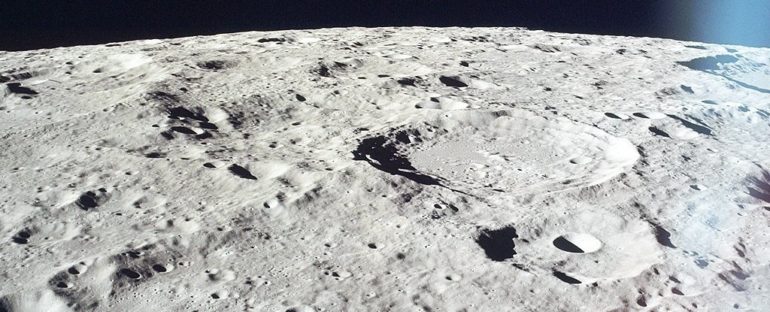A new study by NASA scientists suggests that the ‘roughness’ of the Moon‘s surface, and its accompanying shadows, could be a hiding spot for water ice.
Although it might look like a dried-up husk, the Moon seems to have water all over it. Our spacecraft just keep seeing (or crashing into) the icy stuff.
But scientists don’t fully understand how that can be possible. Because there is no atmosphere to regulate temperature during the day, the Moon’s surface gets hot enough to boil water.If any captured water did manage to turn into ice overnight (when temperatures can get down to around -150°C or -238°F), it would all boil away once the Sun warmed it up.
Yet, somehow, studies have shown that there is water on the surface on the dayside of the Moon – seemingly sitting in incredibly hot temperatures.
“Over a decade ago, spacecraft detected the possible presence of water on the dayside surface of the Moon, and this was confirmed by NASA’s Stratospheric Observatory for Infrared Astronomy [SOFIA] in 2020,” said Jet Propulsion Laboratory (JPL) astrophysicist Björn Davidsson.
“These observations were, at first, counterintuitive: Water shouldn’t survive in that harsh environment. This challenges our understanding of the lunar surface and raises intriguing questions about how volatiles, like water ice, can survive on airless bodies.”
This isn’t really an issue if you assume that water is not free to move around on the surface – all locked up in something like rock or glass created by meteorite strikes. This is a solid theory, and we know from geological samples from past Apollo missions that this is part of the story.
However, a study in 2009 found that the amount of water changes depending on the time of day. There’s less water before noon in the hottest part of the day, but it increases again in the afternoon when it cools down a little. This suggests that at least some of the water is free to move around – getting boiled during the day and then frozen again later on.
When looking at the thermophysical models that we use to understand this, it’s assumed that the surface is mostly flat. If you’ve glimpsed at a photo of the Moon’s pocked surface recently, you’ll know that the lunar surface isn’t exactly a smooth orb.
In new research, Davidsson and another JPL researcher – Sona Hosseini – updated their model to make the Moon’s surface much rougher. In fact, they used images from Apollo missions showing boulders and craters to really match the surface.
They found that the roughness created shadows that allowed the model Moon to retain its water, and allowed the water to move around as the day heats up and cools down again.
“Frost is far more mobile than trapped water,” said Davidsson. “Therefore, this model provides a new mechanism that explains how water moves between the lunar surface and the thin lunar atmosphere.”
It’s important to note that this isn’t the first study to look at surface roughness in relation to Moon water. A previous paper also suggested that water could have been held in tiny ‘cold traps’ across the surface.
However, the new study also looked at desorption, giving the models a more accurate portrayal of our lunar neighbor.
“The model of the surface temperature of the Moon described in this paper has significant implications for understanding the presence and evolution of water on the lunar surface,” Davidsson and Hosseini write in their new paper.
“It is of critical importance to take account of the surface roughness to get an accurate picture of the amount of water on the surface of the Moon.”
The research has been published in the Monthly Notices of the Royal Astronomical Society.


